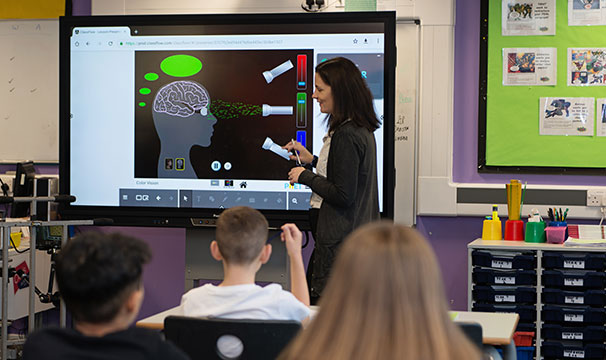How can edtech support school strategies?
Over the past year, the education landscape has seen widespread changes to the learning environment – some temporary, and some with longer-lasting effects. These developments have only increased the importance of technology in the classroom, with edtech now essential for maintaining pedagogical continuity and helping schools adapt to unexpected changes quickly and easily.
But, it’s not as simple as just purchasing the best edtech solutions available. Each school is unique, and it’s vital that edtech strategies complement wider school priorities. In this blog post, the first of a three-part series focusing on school strategies, we will begin by exploring the evolving role of technology in education…
How are students and teachers accessing technology?
Over the years, opinions towards technology in the classroom have varied – but now, more than ever, schools will benefit from adopting a ‘digital first’ strategy.
Not only does edtech support learning no matter where students are based, it’s also worth noting that teachers are now educating new generations of learners who are expected to be confident ‘digital natives’. However, even digital natives need time and experience using technology to build their confidence – so which technologies are common in classrooms?
Traditional interactive projector and interactive whiteboard setups are increasingly uncommon, having been replaced by powerful interactive flat panel displays (IFPDs) like the Promethean ActivPanel. Unlike their predecessors, IFPDs are capable of acting as the connected hub of the modern classroom, offering a rounded experience that delivers productivity benefits for teachers while acting as a central resource for all kinds of educational content.
Making the most of edtech solutions including IFPDs is a key priority for many schools, in order to maximise the benefits for students and teachers alike. Part of this lies in ensuring equitable access to technology, a concern which has been growing in prominence in Australia recently.
Today, many households have access to more advanced technologies than schools – but this isn’t always the case. In fact, many students don’t have access to crucial resources such as a reliable internet connection or a laptop to work with. To ensure equitable access to technology, it’s important that schools consider their students’ situations before investing in edtech solutions which require users to access peripheral devices in order to get educational value out of them.
By developing a ‘modern classroom’ which builds upon an effective edtech ecosystem, schools can lay the foundations for a healthy technology strategy, without assuming access to personal devices among their students.
In the second instalment of this series, we’ll be taking a look at how schools can use digital strategies to support wider strategic outcomes – make sure to sign up to our Resource Hub updates so that you can be among the first to read it!

